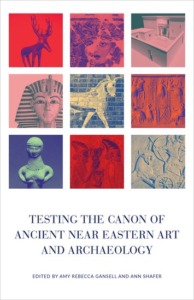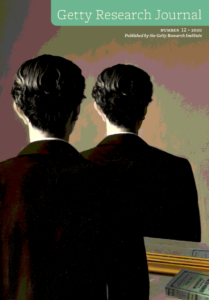This past week I attended the 14th Melammu Symposium at UCLA, which began with the sad news that Robert H. Dyson, Jr. has died at the age of 92. Perhaps best known as the excavator of Hasanlu in northwestern Iran from 1956 to 1977, Dyson was also a museum curator and administrator. While the manner and publication of the Hasanlu excavations have raised questions in recent years, it is doubtless thanks to Dyson’s tireless efforts that so much material from that site is known and available for study, and the University of Pennsylvania is one of the major centers for the study of Iranian art and archaeology. Indeed, his support for Iranian colleagues, such as Ezat Negahban, in the face of major political challenges marks him as one of the most important contributors to this field; his passing is accordingly a major loss.
New publications
 I am happy to report the (fairly) recent publication of two essays of mine. First, last month my essay “The Canon of Ancient Iranian Art: From Grand Narratives to Local Perspectives” was published in Testing the Canon of Ancient Near Eastern Art and Archaeology, edited by Amy Gansell and Ann Shafer (Oxford University Press). Hard copies of the book are only just now available. In this essay I argue that the ‘canon’ of ancient Iranian art arose from a combination of excavated sites and unprovenanced objects, which were organized into a historical sequence. This results in a canon that favors similarity over local variation, and obscures the richness of Iran’s archaeological record.
I am happy to report the (fairly) recent publication of two essays of mine. First, last month my essay “The Canon of Ancient Iranian Art: From Grand Narratives to Local Perspectives” was published in Testing the Canon of Ancient Near Eastern Art and Archaeology, edited by Amy Gansell and Ann Shafer (Oxford University Press). Hard copies of the book are only just now available. In this essay I argue that the ‘canon’ of ancient Iranian art arose from a combination of excavated sites and unprovenanced objects, which were organized into a historical sequence. This results in a canon that favors similarity over local variation, and obscures the richness of Iran’s archaeological record.
 The second paper, co-authored with Dr. A. M. Belis, is a publication of an Urartian belt in the J. Paul Getty Museum, with a discussion of the origin of the ‘Parthian shot,’ as both an artistic motif and a military tactic. We suggest that it was first used by the Urartians, and the Assyrians were consequently the first to depict it, in a relief at the Northwest Palace at Nimrud. It is published in volume 12 of the Getty Research Journal.
The second paper, co-authored with Dr. A. M. Belis, is a publication of an Urartian belt in the J. Paul Getty Museum, with a discussion of the origin of the ‘Parthian shot,’ as both an artistic motif and a military tactic. We suggest that it was first used by the Urartians, and the Assyrians were consequently the first to depict it, in a relief at the Northwest Palace at Nimrud. It is published in volume 12 of the Getty Research Journal.
